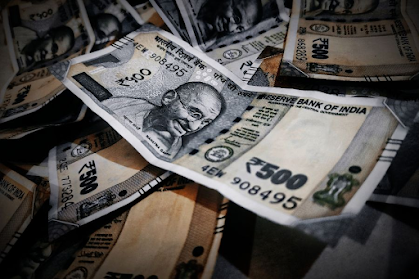Would Rupee Talk? 🧐
This blog will most likely be one of the most interesting topics I've ever written about, and I hope I can convey my excitement. Just to give you an idea, I am mainly going to cover 4 topics in the following way: the history of money, the gold standard, de-dollarization, and the future, respectively.
As early as the 16th century, money was really salt. It was used as a wage for the soldiers. When the soldiers procrastinated, the landlords used to say that the soldier was not worth his salt. Salt was called salarium, and that's how the word "salary" was derived. Later, a concept called obols was considered as a medium of exchange. It is said that the size of these coins was so small that people used to carry them in their mouths. So, when a Greek visited a place and thought of buying an axe, he coughed at the place and swelled the tax.
Then there was a dark time when there was no money. During those times, traders invented the barters system, which was basically using the goods that you possess as a means of exchange. For eg, buying 1 kg rice in exchange for 1 kg wheat. Surprisingly, the barter system lasted till the end of the 18th century.
Later, metals like copper, silver, gold, and bronze were given a chance and the most successful one was a coin with a picture on each side. Along with the coin came paper money, having governments as a custodian. Later came the cheques and credit cards and purchasing on time began. Before that, it was a credit-based system. When spending grows so easy, it becomes hard to save a dime. This statement holds too much value.
By the time we entered the 19th century, the dollar had started to dominate the world's currencies. The US had played the game smartly. The Americans understood it quite early that a country becomes powerful when its currency becomes powerful. Instead of fighting in World War II, the US realised that the most important thing needed to fight a war was ammunition. Their ammunition exports grew from $2.4 billion in 1913 to $6.2 billion in 1917. The Americans understood early on that oil was on the verge of becoming a global commodity.
The Saudis were discovering new oil wells, but they lacked the necessary infrastructure. The US came forward as a "friend" and offered the Saudis to protect them from the neighbouring countries and assured them that they would help Saudi Arabia build the required infrastructure so as to tap the global market. But as Uncle Scrooge wisely said, "Nothing good is ever free." Considering the agreement, the US asked the Saudis to carry out dollar-denominated trades. This led to a sudden rise in dollar demand.
From 1879 to 1914, the concept of the "gold standard" was all around. Essentially, currencies were issued based on the amount of gold reserves held by their respective central banks. The value of the dollar was increasing day by day. Countries holding dollars as foreign exchange reserves were allowed to exchange gold for dollars. After a certain point, the dollar's demand just skyrocketed. The United States was short of dollars because they were permitted to issue them based on their gold reserves. As a result, President Richard Nixon announced the deregulation of the gold standard on August 15, 1971. After the gold standard was abolished, the United States was free to print as much money as it pleased. That is how the dollar rose to prominence in global trade.
I just can't emphasise enough the fact that being a student of history has given me an analytical edge rather than just an information edge. Having said that, the current economic scenario is unknowingly forcing me to think about something that was once a dream: the Rupee being the reserve currency.
The RBI has been a net buyer of gold over the last 3 years. They have bought 132 metric tonnes of gold between May 2020 and September 2022. Gold's weightage in India's forex kitty has risen from 4% in 2020 to 8% in 2023. On the other hand, India is planning to undertake rupee-denominated trade with various trading partners like Russia, the UAE, Malaysia, Singapore, Australia, Bangladesh, etc. Russia has also been a net buyer of gold since 2014, the year they invaded Crimea. Even though gold as an investment would be the last thing I would recommend, having large stacks of gold bars is healthy for an emerging country like India.
I believe that many countries got a wakeup call regarding their dollar reserves when the US froze Russia's forex reserves worth $300 billion when they invaded Ukraine. The US can freeze our dollar reserves anytime they want, making us handicapped.
Rising gold reserves in India's forex kitty, India signing rupee-denominated FTAs (foreign trade agreements) with multiple nations, the Russian central bank buying gold, the UAE talking about giving up dollar-denominated trade, rising corporate debt levels in the US, launching the digital rupee—one thing is clear. If everything goes as planned, the rupee will become a global reserve currency within the next two decades. This is my prediction. I might be wrong, but as Shakespeare said, "our doubts and traitors can make us lose the good we often might win by fearing to attempt."
HAPPY INVESTING..




Amazing loved the in depth analysis
ReplyDelete